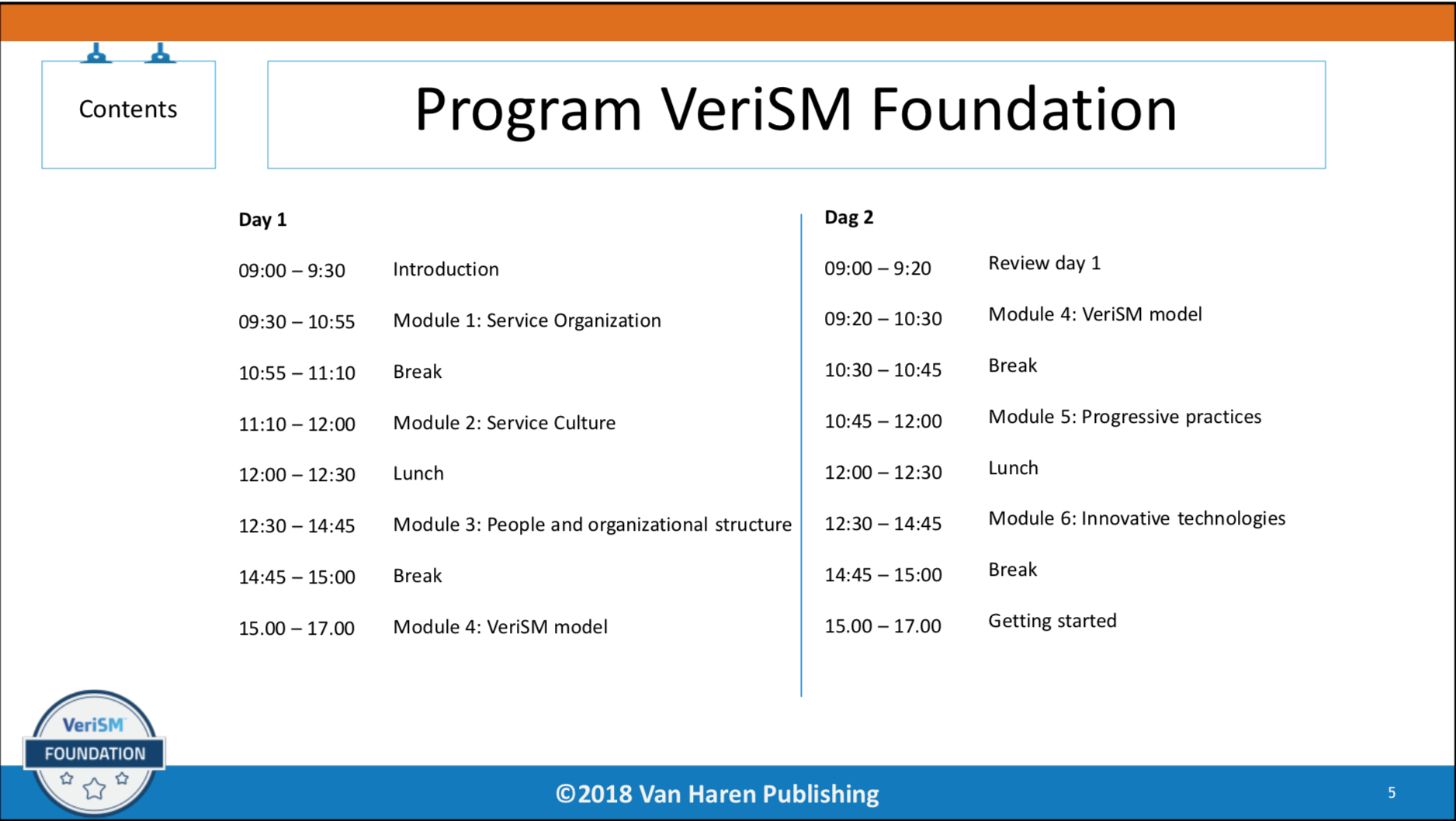
VeriSM™ Foundation
Description
VeriSM™ is a Service Management approach, specifically tailored to support organizations to help them succeed in the world of digital services. VeriSM™ helps organizations to define their service management principles. These principles will be relevant to all products and services, and include areas like security, quality, cost and risk.

VeriSM™ Foundation Training contents:
- The Service Organization
- Service culture
- People and organizational structure
- The VeriSMTM model
- Progressive practices
- Innovative technologies
- Getting started
VeriSM™ Foundation Exam
- Examination type: Computer-based or paper-based multiple-choice questions
- Number of questions: 40
- Pass mark: 65% (26 out of 40)
- Open book/notes: No
- Electronic equipment/aides permitted: No
- Time allowed for examination: 60 minutes
Introducing VeriSM™
Today’s society is surrounded by products and services. Across the globe, people consume services, products and functionality at an astonishing rate. In the last few decades, products and services have become more connected to deliver ever-increasing functionality and intelligence. Services become an ever more important part of the required and expected solutions.
What’s the impact of all this? Put simply, consumer demand for useful solutions is increasing exponentially, and organizations need to be ready to supply those solutions. Solutions are services that provide assistance, advice, help and support. Many of these services (and products) are enabled by or only possible because of advances in technology. These are digital services.
So, let’s be perfectly clear: consumers consume. They provide the need (or demand) for products and services. There is a need to be fulfilled (articulated as requirements), and the consumer is willing to invest in and pay for that functionality, whether directly or indirectly. Consider public services such as education, health and safety or utilities; these are all necessary and all supported by the consumer, either indirectly via a tax system or by a direct purchase.
If there is a consumer, there is also a provider. Providers provide. Whether they provide (or supply) services or products, it really doesn’t matter – the principle behind the provision is where we want to focus. The principle of providing relies on understanding the consumer. Providing something that the consumer doesn’t want does not create any value for the provider or consumer. In fact, it’s just waste; unless you are in the waste business, this isn’t a good plan! For products and services to be successful, there must be a benefit for both the provider and consumer. The provider will only invest in products and services if they see ongoing demand, while the consumer wants to receive value by having their needs met, and feel they are getting a return on investment. The value proposition for both parties must be defined and understood.
The service provider needs to monitor this cycle between consumer and provider. Over time, the needs of the consumer and the capabilities of the provider will change. Service providers must be able to adapt to these changes. The ongoing interaction between the consumer (who confirms their requirements) and the service provider (who confirms their capability to provide) are the dynamics of service provision. Value is the outcome – if nothing of value is achieved by either the provider or consumer, the relationship is over. Managing those dynamics within a ‘consume-provide’ environment drives the development of service management and a service culture.




